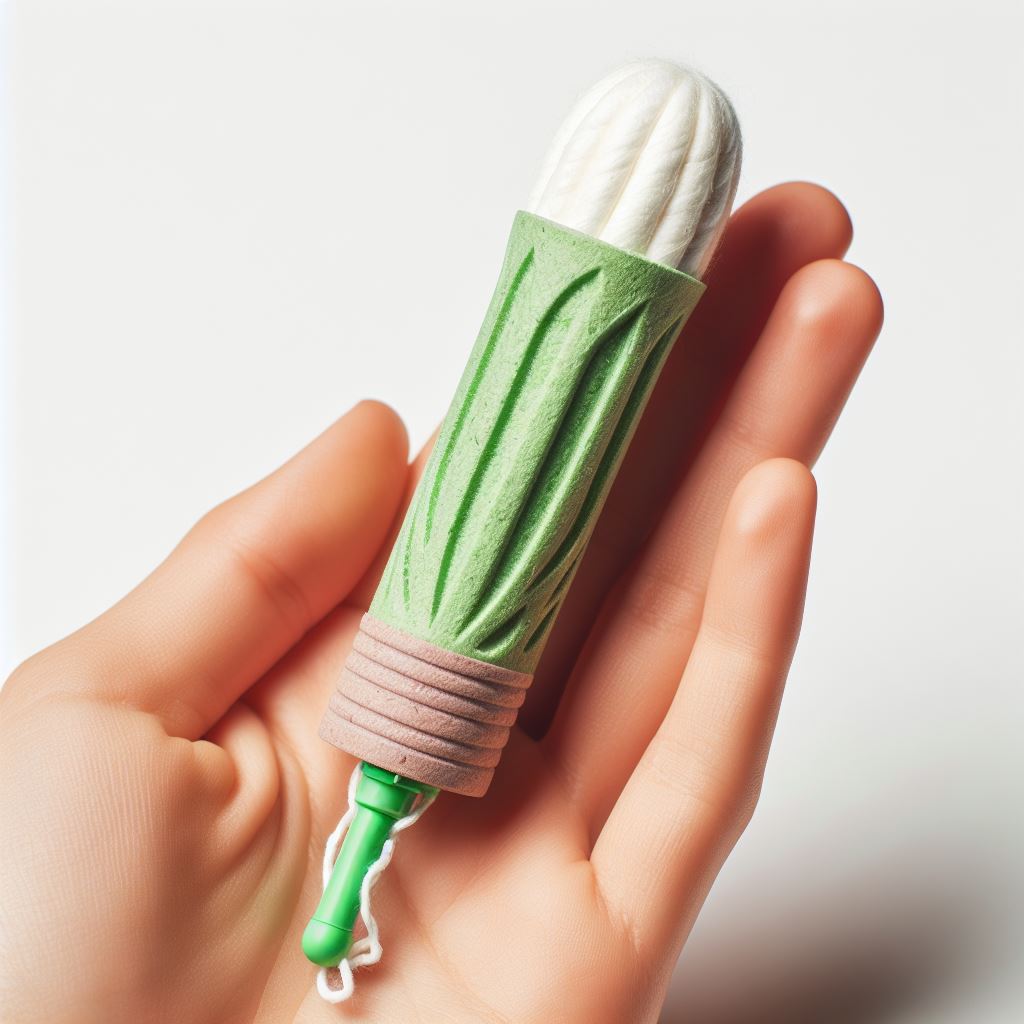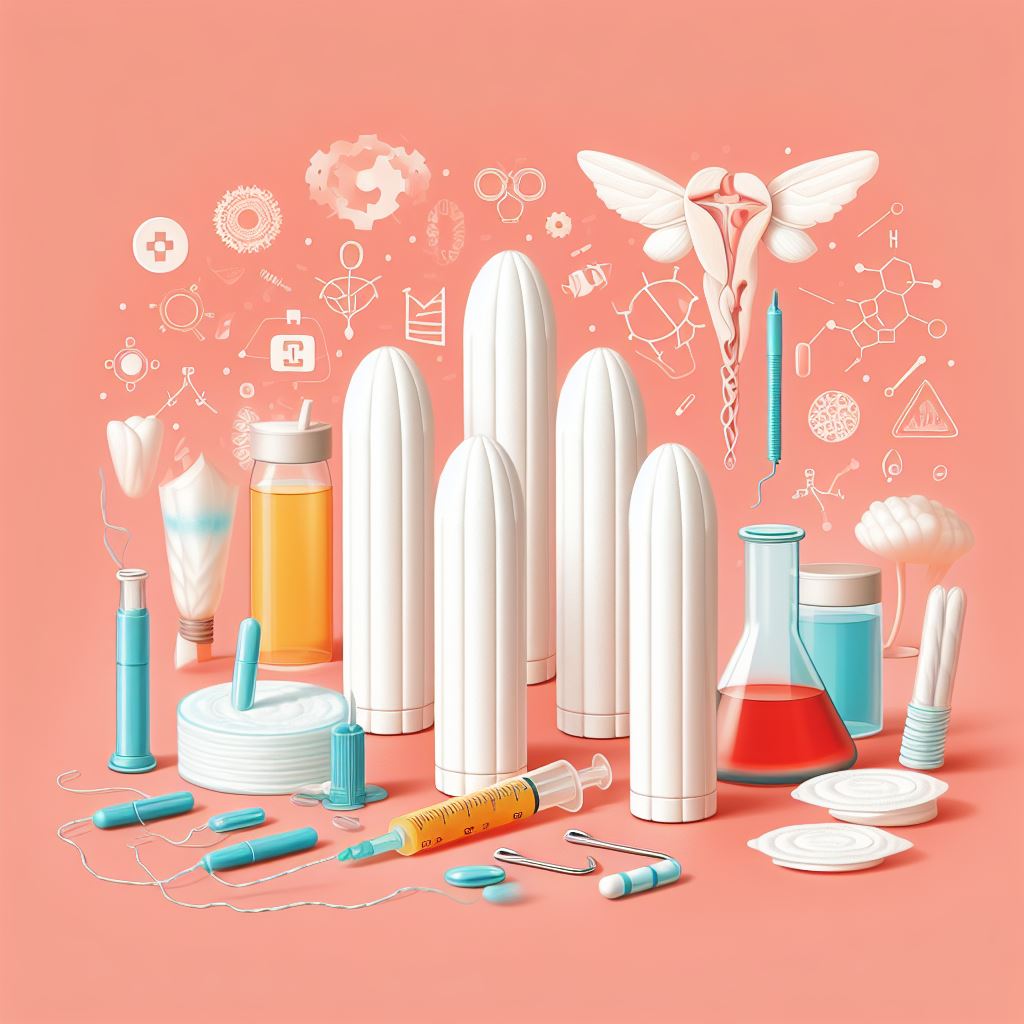Ladies, have you ever stopped to think about what exactly is in the tampons that you use every month? Many people often overlook this topic, but we should give it our attention. In recent years, there has been growing concern over the use of titanium dioxide in tampons and its potential health effects. This remarkable truth has caused quite a stir in the feminine hygiene product industry and has left many women wondering if they should be rethinking their choice of tampons.
In this article, we will delve into the remarkable truth about titanium dioxide in tampons. We will explore the possible risks associated with its use and discuss alternative options for those who may want to avoid this controversial ingredient. It’s time to shed some light on this important issue and empower women with the knowledge they need to make informed decisions about their feminine hygiene products.
Table of Contents
ToggleThe Use Of Titanium Dioxide In Tampons What You Need To Know
Have you ever wondered about the potential health risks of titanium dioxide in tampons? Many people express concerns regarding the utilization of this chemical in feminine hygiene products. Understanding the components of these items is crucial. Titanium dioxide, a prevalent ingredient in various consumer goods such as cosmetics, sunscreen, and food products, is at the center of these concerns. However, its presence in tampons has sparked controversy due to its potential impact on women’s health.
It is crucial to delve into the truth behind the use of titanium dioxide in tampons. While some argue that it serves as a whitening agent and helps with absorbency, others worry about its possible link to reproductive issues and cancer. The debate over whether or not it poses a risk to women’s health continues to garner attention from both experts and consumers alike. Understanding the facts surrounding this topic can help individuals make informed decisions when choosing their preferred feminine hygiene products.
When considering the use of titanium dioxide in tampons, it’s essential to weigh the potential benefits against any associated risks. As more research emerges on this subject, it becomes increasingly crucial for manufacturers and regulatory bodies to address any concerns related to the safety of these products. With growing awareness about the ingredients used in personal care items, there is an opportunity for greater transparency within the industry regarding the inclusion of substances like titanium dioxide.
The Potential Health Risks Of Titanium Dioxide In Tampons

As women, we trust that the products we use for our hygiene are safe and free from any potential harm. However, when it comes to tampons, there might be a hidden health risk that many of us aren’t aware of titanium dioxide. When used in feminine hygiene products, this common ingredient in many everyday items has been linked to potential health risks.
While regulatory agencies continue to study the effects of titanium dioxide in intimate care products like tampons, women need to stay informed about potential health risks. Consumers must have access to transparent information about the ingredients present in their feminine hygiene products so they can make educated choices about what they’re putting into their bodies. Making informed decisions helps ensure that you’re taking care of your body while using products that align with your values and priorities.
How To Make Informed Choices About Titanium Dioxide-Free Tampons
Ladies, have you ever stopped to think about what goes into the products we use daily? It’s time to start making informed choices about the items that come into contact with our bodies, especially when it comes to something as intimate as tampons. With all the talk about the potential health risks of titanium dioxide in tampons, it’s important to know how to make smart decisions for your well-being.
First and foremost, do your research. Look for brands that offer titanium dioxide-free tampons and educate yourself on the ingredients used in their production. Many companies now provide detailed information on their websites regarding the materials they use, so take advantage of this transparency to find a product that aligns with your values and concerns.
Furthermore, don’t be afraid to ask questions. Contact manufacturers directly or reach out to fellow consumers who are passionate about clean and safe feminine care products. By engaging in open dialogue and seeking out knowledgeable resources, you can gain valuable insights that will empower you to confidently choose titanium dioxide-free tampons for your personal care routine.
As you navigate the world of feminine hygiene products, remember that your health is worth prioritizing. Making informed choices about titanium dioxide-free tampons may require some extra effort, but the peace of mind and confidence in knowing you’re taking control of what goes into your body is truly priceless. So next time you’re browsing through the aisle at the store, consider these tips and take charge of your wellness journey.
Frequently Asked Questions – Titanium Dioxide in Tampons

What Other Products Besides Tampons Might Contain Titanium Dioxide?
Curious about what other products might contain titanium dioxide? Well, you may be surprised to learn that this widely used ingredient can be found in a variety of everyday items. From skincare products to food items and even certain medications, titanium dioxide has made its way into numerous consumer goods.
In the realm of skincare products, it’s not uncommon to find titanium dioxide listed as an ingredient in sunscreens, moisturizers, and foundations. This is due to its ability to provide UV protection and create a smooth, matte finish on the skin. Additionally, some toothpaste formulations also include titanium dioxide for its whitening properties. It’s fascinating how this one versatile compound can have such diverse applications.
Moving beyond personal care items, titanium dioxide is also present in many food products. You might spot it on the ingredients list of candies, chewing gum, and powdered sugar. Its use in these edible products serves various purposes such as enhancing color and texture or preventing caking. Furthermore, pharmaceuticals like tablets and capsules may contain titanium dioxide as a coating agent or coloring additive. The prevalence of this substance across different industries is truly astounding!
Are There Any Studies On The Long-term Effects Of Using Tampons Containing Titanium Dioxide?

As women become more aware of the ingredients in their feminine hygiene products, questions about the long-term effects of using tampons containing titanium dioxide have begun to surface. Many wonder if any studies shed light on potential health risks associated with this common additive.
While some research has been conducted on the safety of titanium dioxide in various consumer products, including food and cosmetics, there is a notable lack of specific studies on its use in tampons. This leaves many women feeling uncertain about the potential impact on their health from prolonged exposure to this substance.
Despite the absence of concrete evidence regarding the long-term effects of using tampons containing titanium dioxide, it is crucial for consumers to remain vigilant and informed about the products they use. As discussions around menstrual product safety continue to gain traction, researchers need to prioritize studying the potential health implications of incorporating such additives into intimate care items.
How Can I Tell If A Tampon Contains Titanium Dioxide?
Wondering how to detect the presence of titanium dioxide in your tampons? The task may seem tricky, but with a little bit of knowledge and careful inspection, you can easily identify whether your favorite brand contains this potentially harmful ingredient. Firstly, look at the packaging – read the label carefully and check for any mention of titanium dioxide in the list of ingredients. Secondly, if there is no clear indication on the packaging, consider reaching out to the manufacturer directly for more information.
Furthermore, another way to determine if a tampon contains titanium dioxide is by examining its color and texture. Some tampons that contain this chemical may have a slightly different appearance compared to those without it. Keep an eye out for any unusual colors or textures that could indicate the presence of titanium dioxide. Additionally, be mindful of any changes in odor or discomfort while using these tampons as they could also serve as potential indicators.
In addition to scrutinizing the packaging and visual cues, researching online forums and reviews from other users who may have already investigated this issue can provide valuable insights. By gathering all available information through various sources, you can make informed decisions about which products are safe for use. Remember to stay vigilant and proactive when it comes to safeguarding your health from potentially harmful substances such as titanium dioxide in tampons.
Are There Any Alternative Materials Used In Tampons That Are Considered Safer Than TiO2?

Many people are concerned about the potential health risks of using tampons that contain titanium dioxide. As a result, they may be wondering if there are any alternative materials used in tampons that are considered safer than titanium dioxide. It’s important to explore this topic and understand the options available for those who want to make informed choices about their menstrual products.
One alternative material used in some tampons is organic cotton. Organic cotton is grown without the use of synthetic pesticides or fertilizers, making it a more natural and environmentally friendly option. Additionally, some companies offer tampons made with biodegradable materials such as bamboo fibers or plant-based plastic applicators. These alternatives can provide peace of mind for individuals who are seeking safer and more sustainable options for their period care products.
In addition to organic cotton and biodegradable materials, some companies also offer tampons made with hypoallergenic materials. These tampons are designed to minimize the risk of allergic reactions or irritation, making them a potentially safer choice for individuals with sensitive skin. By considering these alternative materials, individuals have the opportunity to choose tampons that align with their values and comfort levels while avoiding potential exposure to substances like titanium dioxide.
What Regulations, If Any, Are In Place Regarding The Use Of TiO2 In Tampons?
Many consumers express concerns about potential health risks linked to titanium dioxide in tampons. Consequently, they may wonder about existing regulations governing its use. Currently, there are no specific regulations in place regarding titanium dioxide in tampons. This lack of regulation has prompted many individuals to raise concerns, as they believe implementing more stringent guidelines is necessary to ensure the safety of feminine hygiene products.
In response to these concerns, it is crucial to explore the current regulatory landscape and advocate for more comprehensive guidelines to address potential health risks associated with the use of titanium dioxide in tampons.
Furthermore, without clear regulations on the use of titanium dioxide in tampons, it can be difficult for consumers to make informed decisions about which products to purchase. As a result, there is a growing demand for increased transparency and oversight within the industry to address these concerns. Many advocates argue that regulatory agencies should take action to protect public health by implementing stricter guidelines for the use of potentially harmful substances like titanium dioxide in feminine hygiene products.
Considering these factors, it becomes evident that we need to give more attention to regulating materials used in tampons. Without proper oversight and guidelines, consumers may continue to express apprehension about the potential risks associated with titanium dioxide and other similar substances. Ultimately, regulatory agencies and manufacturers alike must prioritize consumer safety and address these concerns through effective regulation and transparent communication.
Conclusion
In conclusion, being aware of the potential risks associated with titanium dioxide in tampons is crucial. While this substance may contribute to enhancing the absorbency and whiteness of the product, it has also been associated with health concerns such as inflammation and oxidative stress. As consumers, we have the power to make informed choices about the products we use, including opting for titanium dioxide-free tampons.
For example, consider Sarah, a young woman who experienced discomfort and irritation while using tampons containing titanium dioxide. After switching to a brand that did not use this ingredient, she noticed a significant improvement in her overall well-being. This real-life scenario highlights the importance of being mindful of what goes into the products we use regularly.
By educating ourselves about the potential risks of certain ingredients and seeking out alternatives, we can take control of our health and make choices that align with our values. In doing so, we can prioritize our well-being and contribute to a safer and healthier future for all.






Pingback: The Truth About Titanium Dioxide: Friend or Foe? - Safe Climber Overseas Pvt. Ltd.